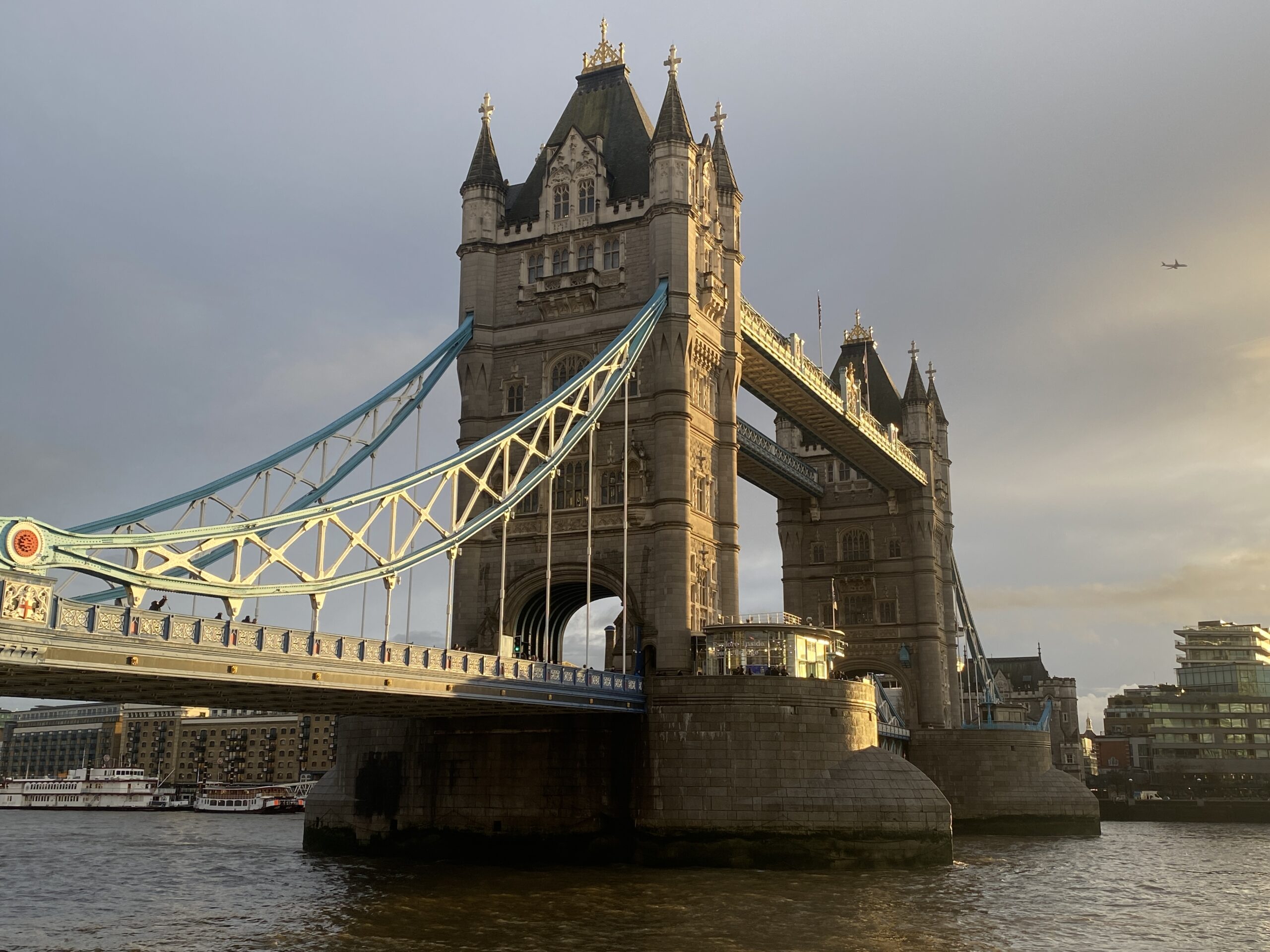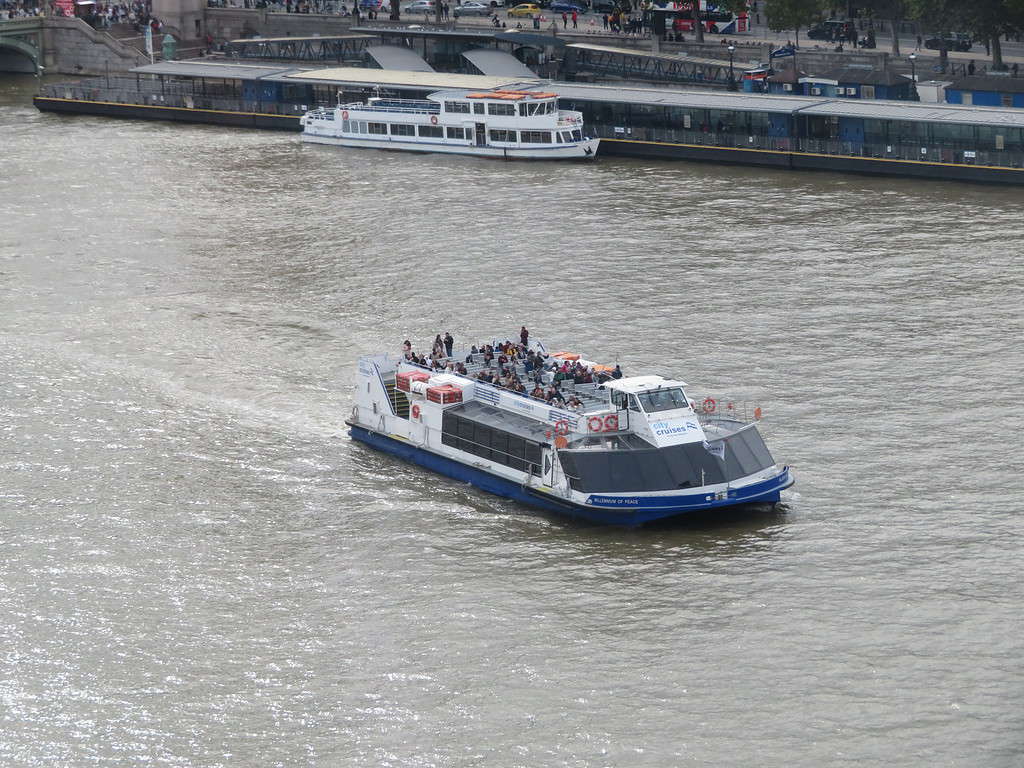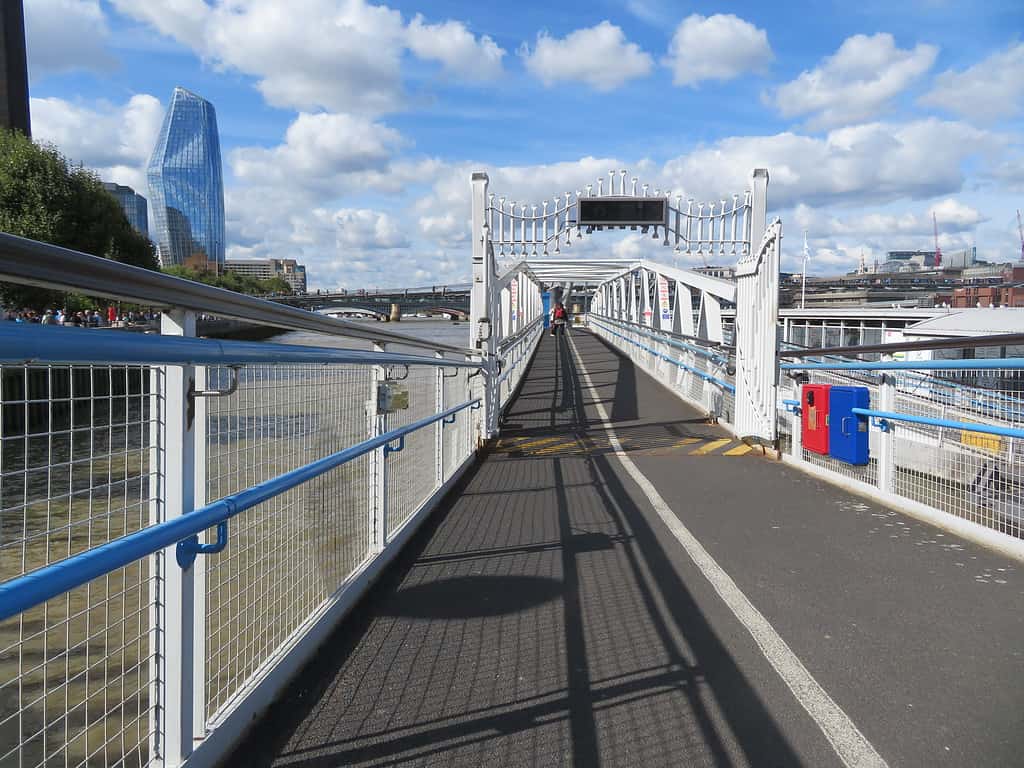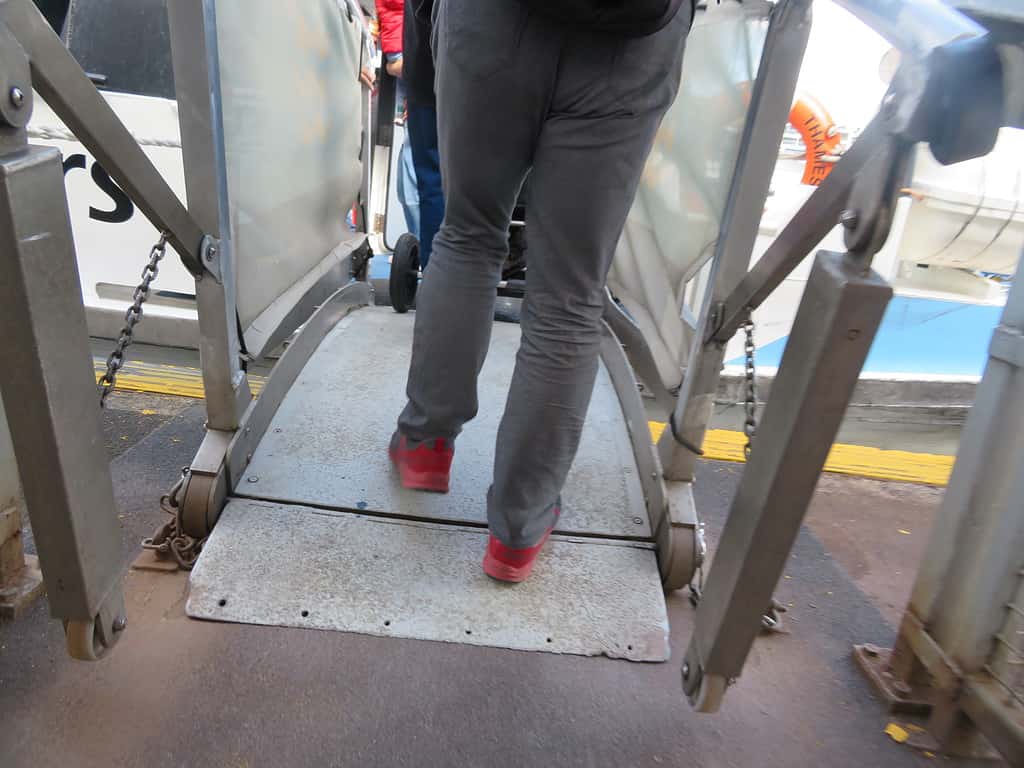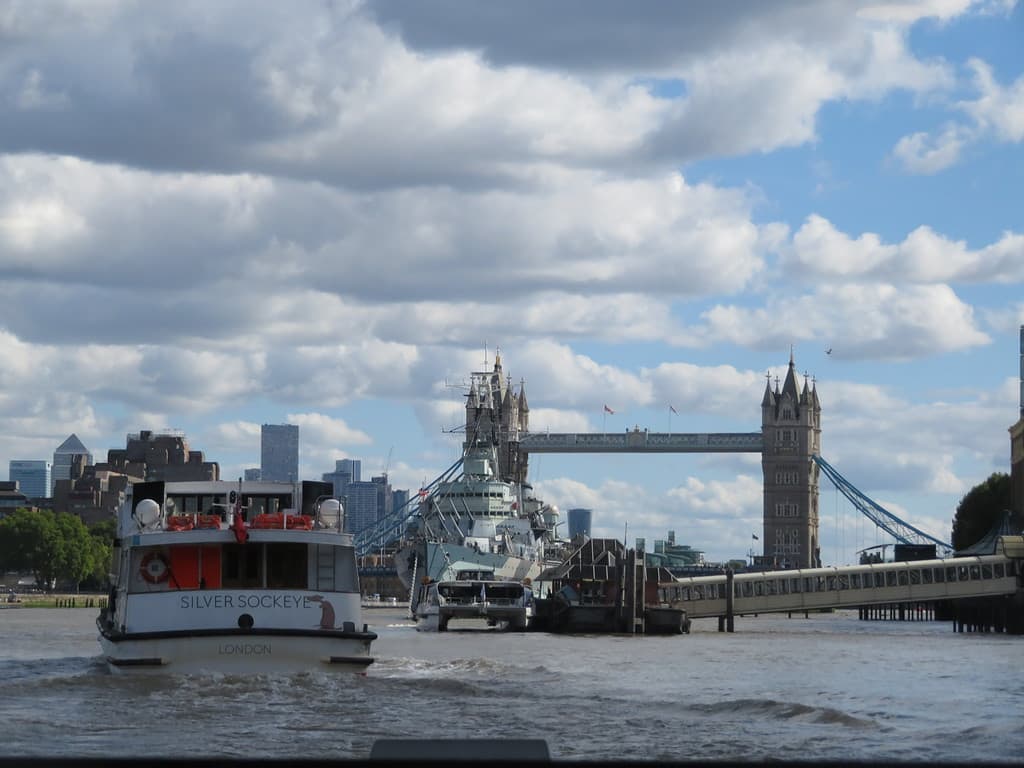Is London Worth Visiting in 2024?
I have visited London on several occasions and have fallen in love with the city. However, I still get asked if London is worth visiting. So, when my friend and fellow travel blogger Beth asked if she could write a post on this topic for me, I heartily agreed.
This post was written by fellow travel blogger, Beth McCarter, while on her latest two-week trip to London. Beth has traveled extensively and still finds London and the surrounding area to be one of her favorite destinations.
This post contains affiliate links. As an Amazon Associate, when you click on these links and make a purchase, I earn a small commission at no cost to you.
Traveling to London? Check Out These Travel Resources
Flights: Skyscanner
Hotels: Expedia
Travel Insurance: Insure My Trip
Tours and Activities: Viator
Where is London?
London is the capital of both England and the United Kingdom and is located alongside the River Thames (pronounced ‘tims’) in the southern portion of the country.
London is frequently compared to both New York City and Paris; I’ve visited all three many times and London is by far my favorite. Although it’s not as old as France’s capital, it makes Paris seem tiny.
London is also nearly double the size of New York City. But don’t worry! London’s comprehensive transportation system makes it possible for all passengers to explore the city, including those with limited mobility.
How to Get to London
Getting to London from the continental U.S. will take you anywhere from 7-9+ hours depending on where you’re flying from. I opted for a non-stop flight from Dallas (my local airport) during the winter season because I found affordable round-trip fares for only $500.
This cost-effective choice allowed me to explore the city without breaking the bank. However, it’s essential to keep in mind that after landing at London Heathrow Airport, you’ll need to factor in about an hour and a half of travel time to reach the central London attractions.
☑️ Read my tips on how to score your own deal on flights to London when you read my post on the secrets to Finding Cheap Flights Anywhere.
Is London Worth Visiting: 7 Reasons London Should Be on Your Bucket List
1. Free Museums and Galleries
London has a huge array of free museums and galleries. I loved the British Museum so much that I visited it three separate times during my last stay in London. While there, I spent the majority of my time in the medieval England and ancient Egypt sections. You could easily spend an entire week exploring the museum’s rich collections.
On the other hand, the Museum of Natural History, although impressive in its sheer size, was less interesting. School holidays had just begun and tons of families were visiting, making the museum somewhat overwhelming and hard to navigate through the crowds. Some of the exhibits seemed a tad outdated.
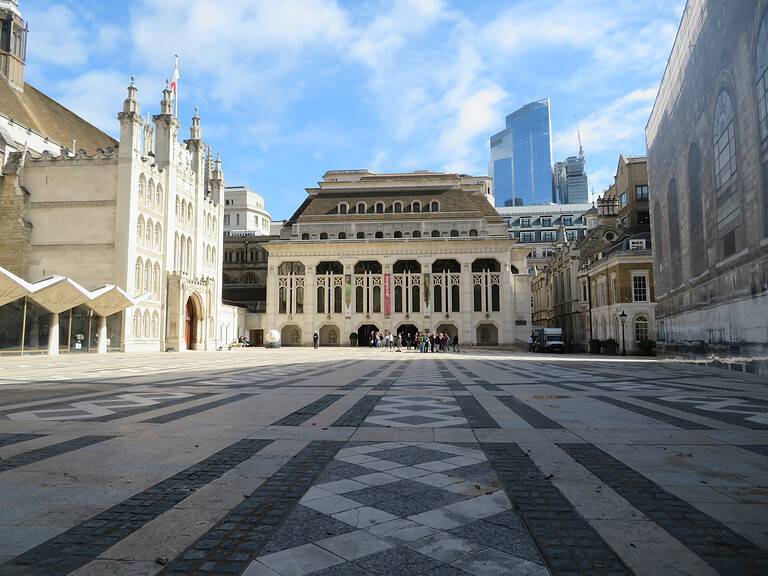
Next door to the Museum of Natural History, you’ll find the V&A (Victoria and Albert) Museum. While my visit here was relatively brief (around an hour) it was time well spent. The proximity to the Museum of Natural History allows for a convenient combination visit, and the V&A’s diverse collections are well worth exploring.
I was delightfully surprised by the National Portrait Gallery. Despite not being a huge art fan, I found the gallery to be really enjoyable, with a wide variety of styles and historical periods represented.
These first-hand experiences reinforced my belief that London’s museums and galleries have something for everyone, making them an essential part of any visit to this vibrant city.
2. Plenty for History Lovers and Architecture Enthusiasts
London is a great place for both history nerds and architecture enthusiasts. The city’s heritage is showcased through its many museums and historical sites, many of them free to visit.
I loved visiting Hampton Court, the majestic palace where Henry VIII and his ill-fated wives resided. What’s remarkable about this place is that it’s a tad bit off the beaten path, and even during the bustling holiday season, it wasn’t overwhelmingly crowded. It offers a glimpse into the opulence and drama of Tudor times that history enthusiasts will appreciate.
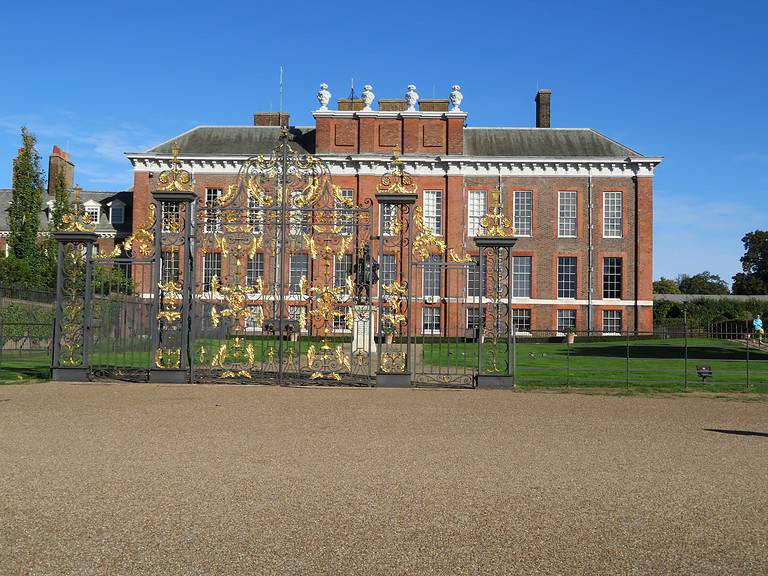
There are a ton of attractions for WWII buffs to explore, from Winston Churchill’s War Rooms to the imposing presence of the HMS Belfast along the Thames. I ended up lodging right next to the Imperial War Museum, with tanks standing sentry on its lawn.
Whether you’re a history aficionado or an architecture buff, London’s wealth of historical buildings and artifacts makes it a destination that’s unquestionably worth visiting.
3. Great Theater Scene
London’s theater scene is an absolute gem. One of the standout features is the availability of affordable tickets, making world-class performances accessible to all. I was pleasantly surprised to find that you could snag a seat at famous musicals like “The Book of Mormon” for as little as $40 USD.
There’s something on the stage for everyone, including gripping dramas and timeless Shakespearean classics, featuring both renowned and up-and-coming actors.
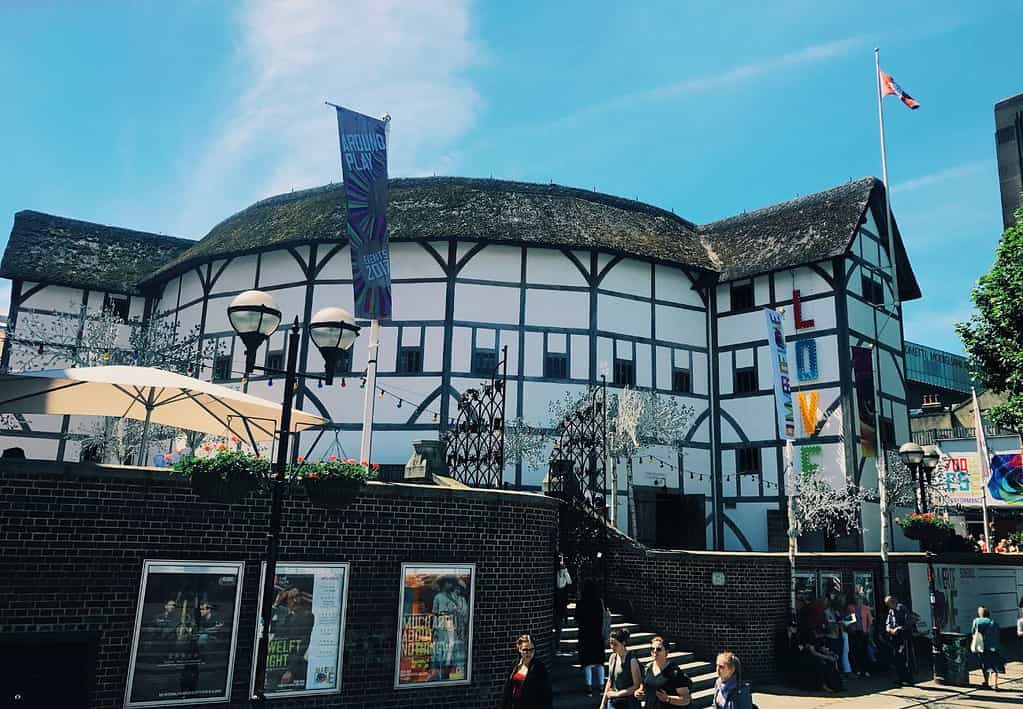
Visiting London during the Christmas season is a treat as the city’s theater scene truly comes alive with a festive spirit. There are a plethora of special shows and musical performances for the Christmas holidays.
4. Diverse Cultures
I recently read a blog post that said one of the reasons London wasn’t worth visiting was because the people “weren’t even British”. What the blogger failed to understand is that many British people have immigrant ancestry and that the racial, cultural, and linguistic diversity of the people is part of the beauty of this multicultural city!
In London, you will hear languages from all over the world. As I rode on a double-decker bus through the city, I couldn’t help but notice that the conversations around me were mostly in languages other than English.
The Commonwealth Gate is a monument near Hyde Park that pays homage to the significant contributions of India, Pakistan, Bangladesh, Sri Lanka, and the Caribbean to both World Wars. It also commemorates the wave of immigration from these countries to London after World War I. This monument serves as a powerful reminder of how diversity has enriched London’s history and continues to shape its present and future.
5. So Many Restaurants!

London’s culinary scene is a paradise for food lovers, offering tons of cuisines that extend far beyond the stereotype of fish and chips. You could dine at a different type of restaurant every night for an entire month. The challenge often lies in deciding where to try next!
During my most recent trip, I walked down a street near the Christmas markets where literally every single restaurant was Italian. I couldn’t make a decision!
After traveling to many different countries, I was pleasantly surprised that London seemed more affordable than most. I could have a nice dinner on my own for around $30-$35 with an alcoholic drink. Tipping wasn’t expected.
6. Amazing Landmarks
London has such a dense concentration of iconic landmarks. From the historic charm of Big Ben and Westminster to the awe-inspiring modernity of The Shard and the London Eye, there’s no shortage of must-see sights in the city.
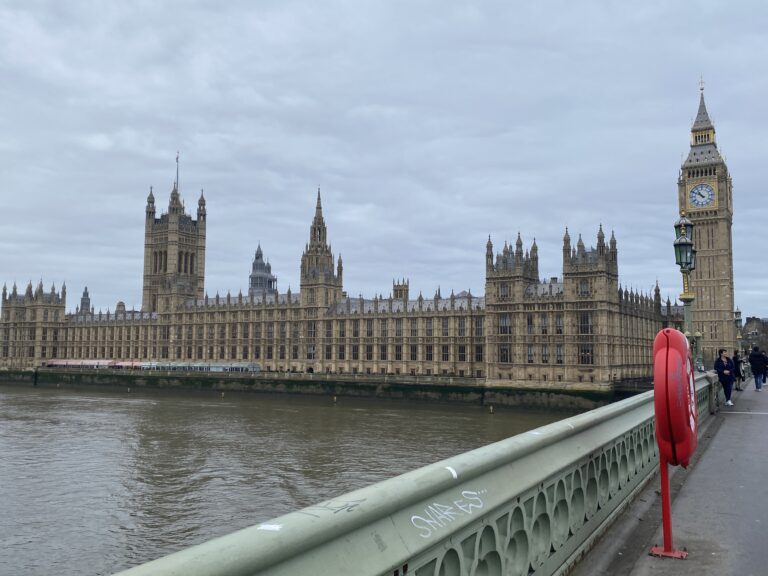
As I mentioned before, my favorite palace is Hampton Court. If you enjoy the drama of the Tudor period you won’t want to miss this one. The stunning private gardens and fascinating history are well worth the excursion outside of central London.
Stonehenge is undoubtedly a bucket-list destination. It’s a bit of a journey outside of London, so be sure to plan for this day trip. You will probably want to add an additional day to your itinerary if you want to make this site.

7. Beautiful Parks and Green Spaces
With over 3000 parks and green areas, many of which are free to enjoy, London offers a respite for nature lovers and outdoor enthusiasts alike.
During the winter months, Hyde Park transforms into a magical wonderland with its own amusement park, adding an extra layer of charm to this already beautiful oasis. I didn’t visit the amusement park but I enjoyed walking through the grounds on my way to the museums.
Richmond Park is highly recommended, with its vast expanse of 2500 acres. This sprawling park offers a wilderness escape right within the city limits, where you can encounter deer roaming freely and explore its scenic landscapes.
Be cautious about visiting parks after dark, particularly when traveling alone. While London’s parks are generally safe during daylight hours, I wasn’t comfortable walking alone after dusk when the visitor numbers decreased.
8. (Bonus) Easy Access to Other European Countries
One of the incredible advantages of being in London is the convenient access it provides to other European countries and various parts of the United Kingdom. Whether you’re looking to explore nearby European destinations or skip over to Scotland or Wales, London is a great starting point for your adventures.
You can hop on a train or catch a short flight to numerous European cities. The Eurostar offers a wheelchair-friendly option, making it easy to travel to Belgium and explore its charming Christmas markets.
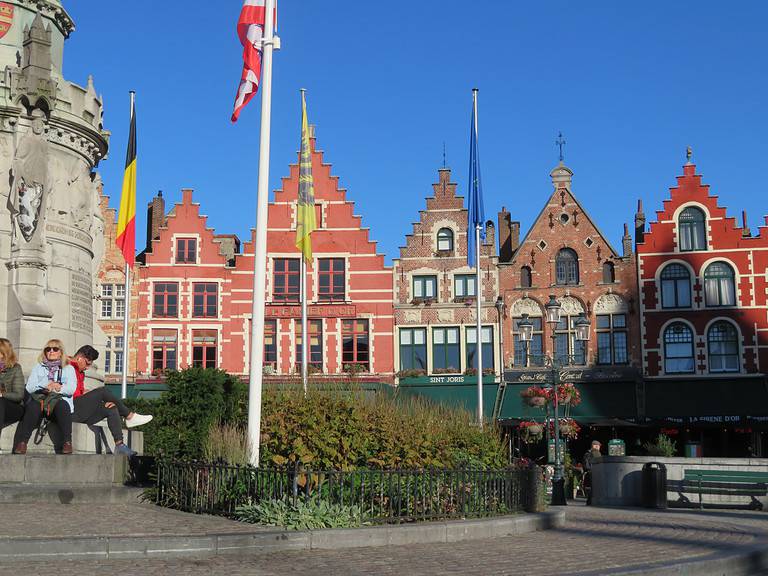
The accessibility of these diverse destinations, both within the UK and across Europe, makes London an ideal hub for travelers seeking to explore the continent.
☑️ Travel Tip: London is a quick train ride away from other popular European destinations such as Amsterdam, Paris, Bruges, Edinburgh, and Germany. You can also take a short flight to Ireland to experience the Emerald Isle.
Is London Worth Visiting for Wheelchair Users and People with Mobility Problems?
Most definitely! The museums alone make a trip to London worth it; these are new, accessible buildings that are reasonably easy to navigate, especially in the shoulder seasons when crowds are thinner. Plus there are so many other wheelchair accessible things to do in London.
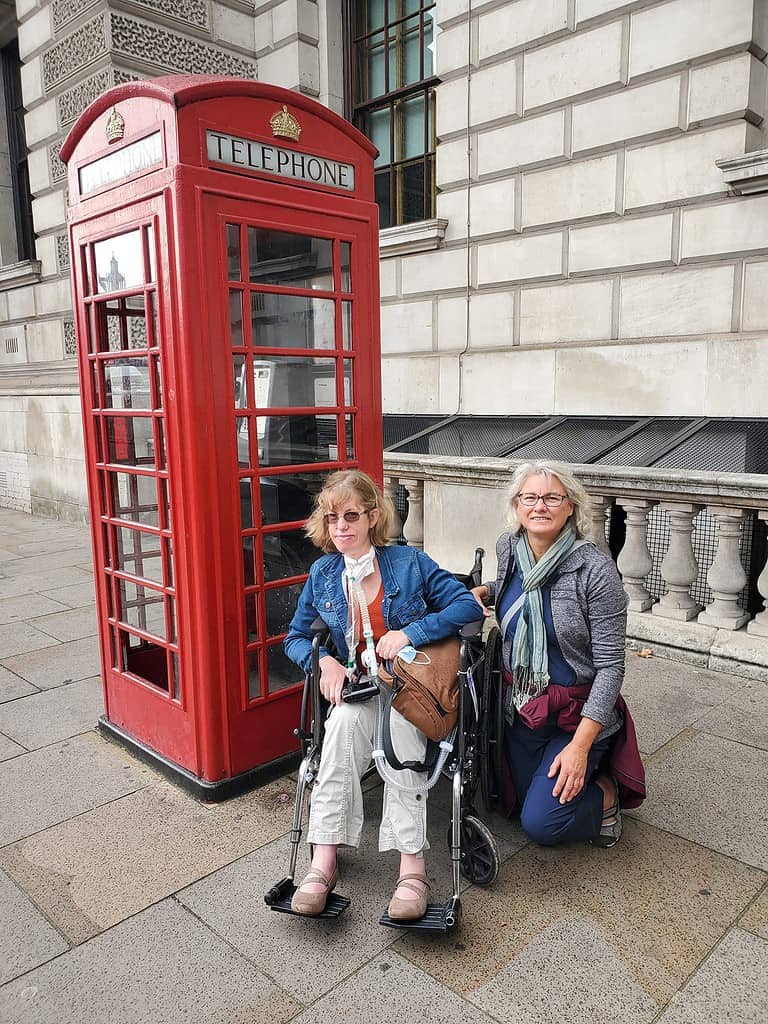
London has plenty of public transportation options and the bus system is completely accessible with wheelchair lifts. The underground and overground trains are another issue, however, as many stations have steps. Keep reading for more challenges and suggestions for those with mobility problems.
Be sure to check out the city’s transportation website here which allows you to plan accessible journeys.
It’s also important to keep in mind that train strikes can potentially impact the accessibility and reliability of public transportation in London. During my stay, train strikes were occurring frequently, which definitely complicated travel plans.
Possible Challenges to Accessibility
While London has made efforts to improve accessibility, there are still some hurdles to keep in mind.
➡️ Restaurant Bathrooms
London restaurants are definitely lacking in accessible bathrooms. I observed that most were located in basements, accessible only via narrow and winding staircases.
➡️ Buses
London buses are wheelchair accessible, but there is no way to secure your wheelchair once inside. Passengers often have to hold onto bars or secure themselves, which can be challenging for those with mobility issues.
➡️ Tube (London Underground)
The Tube can present accessibility challenges due to its many stairs and limited availability of elevators. Waiting for elevators is time-consuming. Stations with step-free access are marked on the London Underground map. You will want to use the journey planning service available here to find a route that is accessible.
➡️ Busy Sidewalks and Streets
London’s sidewalks are very crowded and the car and bike traffic is particularly intense, especially in popular tourist areas. In general, I observed that Londoners are considerate and willing to make way for individuals with mobility challenges, making it presumably easier to navigate this city than other European cities I have visited, such as Paris.
Getting Around London with Mobility Problems
Here are some considerations for getting around the city:
➡️ Bus
London buses are generally a great choice for individuals with mobility issues. The doors have wheelchair lifts, however, there is no way to secure your wheelchair once inside the bus, only parallel bars to hold on to. I observed that bus riders seemed to be considerate and didn’t use the seats or areas allotted for people with mobility issues.
➡️ Underground (Tube)
The London Underground has elevators at the majority of stations, but there can be very long wait times. Plan your routes carefully to avoid stations that have steps. Check the Tube map for accessible stations to make your journey smoother.
➡️ Overground Trains
Overground trains in London are not as universally accessible as buses or the Underground. While some stations are wheelchair-friendly, many still require navigating steps, making them a lot less convenient for those with mobility challenges. You will want to research specific stations and routes in advance.
➡️ London River Boats
Taking to the water can be a scenic and accessible way to explore London. Many riverboat services offer wheelchair access, making it a unique and enjoyable transportation option.
Kristin here… I took the Uber-type river boat and enjoyed the scenic view of the city from the water. However, at times (depending on the tides) the ramps to get on and off the boat can be steep.
Where to Stay in London
Selecting the right accommodation in London is crucial, especially if you have mobility issues or want to minimize your reliance on public transportation. Make sure to check out my list of wheelchair accessible hotels in London for more specific recommendations on which hotels to stay at.
Staying close to the local attractions you plan to visit each day can simplify your experience. Research the attractions on your itinerary and choose accommodations that are within an easy distance or a short, accessible commute away.
Consider staying near transportation hubs like major train stations or accessible Tube stations. This can make it more convenient to explore different parts of the city. Major train stations include Paddington, Westminster, Waterloo, and King’s Cross Station / St. Pancras International.
Depending on your itinerary, it might make sense to switch hotels during your stay to be closer to different attractions on different days. This can save you time and effort when you head out to visit attractions.
London FAQ’s
When is London Worth Visiting?
I have visited London twice in the winter and particularly enjoyed visiting around Christmas, which offers a magical experience with festive decorations, holiday events, and lower crowds.
While the weather may be gloomy, the city’s holiday charm shines through. Plan for early December to strike a balance between the holiday atmosphere and manageable crowds.
Hi, Kristin popping in here… I’ve visited London in summer and fall and those were lovely times to visit as well with more pleasant weather. Really, anytime you have to visit London is worth it!
How Many Days in London is Enough?
I recommend spending 5-6 days in London to explore the city’s main attractions and get a feel for its culture.
If you plan to take day trips to nearby destinations like Stonehenge, adding an extra day for each trip is advisable to make the most of your visit and ensure a comfortable pace of exploration.
Is London Good for Tourists?
London is an excellent destination for English-speaking tourists. The shared language can make communication and navigation more straightforward.
The city’s cultural familiarity, including dining and shopping experiences, is often similar to what Americans are accustomed to, adding to the convenience.
For the most part, people in London are friendly or neutral towards tourists, as the city’s cosmopolitan and diverse population is accustomed to welcoming visitors from around the world.
Is London Worth Visiting if You Are Traveling on a Budget?
Yes! In fact, I might recommend London as one of the first European destinations to consider when traveling on a budget because of the amount of free attractions the city offers.
London’s abundance of free parks and green spaces provides opportunities for relaxation and enjoyment at no cost.
Additionally, I always recommend renting a place with a kitchen and purchasing groceries because it will significantly reduce the amount you spend on dining.

Is London Safe?
London is generally considered a safe city for tourists, with low crime rates compared to many other major cities. However, like any urban area, pickpocketing is a concern, so it’s wise to keep an eye on your belongings.
Traffic in London is very hectic, and it’s very important to exercise caution when crossing streets. Pedestrians do not have the right of way, so it’s crucial to obey traffic signals and use designated crosswalks. I did not observe any jaywalking, making me think that it was too dangerous.
Although not a safety issue, I learned the hard way to stay on the inside of the sidewalk when it’s rainy. The taxis seem to almost enjoy drenching pedestrians.
What to Pack for a Trip to London
Pack a clear umbrella, waterproof shoes, and a small purse for your trip to London. The city’s weather can be unpredictable, so having waterproof footwear and an umbrella is essential. Don’t forget to include a universal adapter to keep your devices powered while exploring the city.
☑️ For more ideas on what to pack check out my London Trip Packing List and Women’s Travel Essentials posts.
Would I Go Back to London?
I would definitely go back to London! In fact, I’m already planning another trip in the wintertime. London’s charm, diverse attractions, and unique atmosphere have left a lasting impression, making it a destination I can’t wait to return to.
Is London Worth Visiting Recap
In conclusion, I highly recommend visiting London. With its abundance of free museums, rich history, captivating theater scene, cultural diversity, culinary delights, iconic landmarks, and accessible attractions, London offers a well-rounded and enriching travel experience.
The city’s general accessibility, while still presenting some challenges, makes it a worthwhile trip for those with mobility issues as well.
So whether you’re on a budget or seeking a festive winter getaway packed with history and culture, a trip to London is definitely worth your consideration.

Beth McCarter is an experienced traveler who enjoys vacationing with her family and going on solo trips. She transitioned from teaching to online business and now helps bloggers with their email marketing. See more here.

